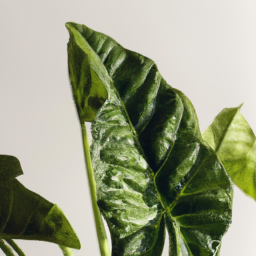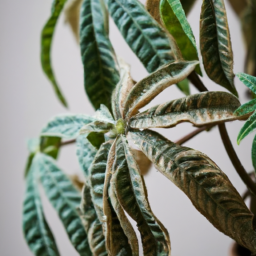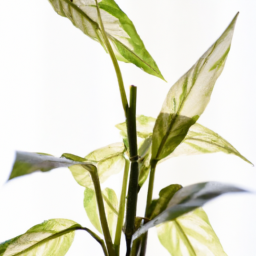
Are you looking to brighten up your indoor space with some greenery, but don’t have access to a lot of natural light? Well, you’re in luck! In this blog post, we will be discussing indoor plants that need little light. Whether you live in a basement apartment or have limited windows, these plants are perfect for adding a touch of nature to your home without the need for direct sunlight. So, let’s dive in and explore the world of indoor plants that thrive in low-light conditions!
Benefits of Indoor Plants That Need Little Light
Indoor plants not only add beauty and charm to our living spaces, but they also provide numerous health benefits. However, not all of us are fortunate enough to have homes with ample natural light. Thankfully, there are several indoor plants that thrive in low-light conditions, making them perfect for those darker corners of our homes. In this article, we will explore the benefits of indoor plants that need little light and how they can enhance our well-being.
Improved Air Quality
One of the most significant benefits of having indoor plants, regardless of the light conditions, is their ability to purify the air we breathe. Many plants have the natural ability to remove harmful toxins and pollutants from the air, thus improving indoor air quality. This is particularly essential in spaces with limited ventilation or in urban areas where outdoor pollution can seep indoors. Plants such as the Snake Plant, Peace Lily, and Chinese Evergreen are excellent choices for low-light environments and are known for their air-purifying properties.
Moreover, indoor plants release oxygen during the photosynthesis process, which increases the oxygen levels in our homes. This can have a positive impact on our overall well-being, as higher oxygen levels can boost concentration, reduce fatigue, and even improve our sleep quality.
Additionally, indoor plants act as natural humidifiers, especially in spaces with dry air or during the winter months when heating systems tend to dry out the air. Plants release moisture through a process called transpiration, which helps to increase humidity levels, making the air more comfortable to breathe. This can alleviate respiratory issues, reduce dry skin, and even prevent the spread of airborne viruses.
Stress Reduction and Mental Health Benefits
Indoor plants have been proven to have a positive impact on our mental health and overall well-being. They can create a calming and soothing atmosphere, reducing stress levels and promoting relaxation. This is particularly beneficial in spaces where natural light is limited, as plants can compensate for the lack of sunlight by providing a sense of nature indoors.
Studies have shown that being around plants can help lower blood pressure, reduce anxiety, and improve mood. The presence of indoor plants can also enhance productivity and concentration, making them a great addition to home offices or study areas. Plants such as the Boston Fern, Spider Plant, and ZZ Plant are known for their ability to thrive in low-light conditions while providing these mental health benefits.
Furthermore, caring for indoor plants can be a therapeutic activity in itself. It allows us to connect with nature, nurture living organisms, and take a break from our daily routines. The act of watering, pruning, and tending to plants can be a mindful practice that promotes mindfulness and relaxation.
Natural Decor and Aesthetics
Indoor plants that thrive in low-light conditions can add a touch of natural beauty to any space, even those with minimal natural light. They come in various shapes, sizes, and colors, allowing you to choose plants that complement your interior decor and personal style.
Plants with dark green foliage, such as the Cast Iron Plant or the Chinese Money Plant, can create a lush and tropical ambiance, while plants with variegated leaves, like the Aglaonema or the Dracaena, can add visual interest and texture to a room. Hanging plants, such as the Devil’s Ivy or the String of Pearls, can be used to add verticality and create stunning cascades of greenery.
Moreover, indoor plants can act as natural room dividers or space delineators, creating separate zones within an open floor plan. They can soften harsh architectural lines, add depth to a room, and create a sense of privacy and intimacy.
In conclusion, indoor plants that need little light offer numerous benefits beyond their aesthetic appeal. They can improve air quality, reduce stress, and enhance our mental well-being. Additionally, they provide a natural and visually pleasing decor element, transforming any space into a green oasis. So, don’t let limited natural light hold you back from enjoying the benefits of indoor plants. Embrace these low-light-loving plants and bring nature indoors!

Popular Varieties of Indoor Plants That Thrive in Low Light Conditions
Introduction
Indoor plants not only add beauty and freshness to our living spaces but also provide numerous health benefits. However, not all homes or offices have abundant natural light, making it challenging to find suitable plants that can thrive in low light conditions. Fortunately, there are several popular varieties of indoor plants that can thrive with minimal sunlight. In this article, we will explore some of these varieties and provide you with a step-by-step guide on how to care for them.
Pothos (Epipremnum aureum)
Pothos, also known as Devil’s Ivy, is a popular choice for indoor gardening enthusiasts due to its ability to tolerate low light conditions. This versatile plant features heart-shaped leaves that come in various shades of green, making it an attractive addition to any space. Pothos is not only easy to care for but also helps purify the air by removing toxins.
To ensure the well-being of your Pothos plant, place it in an area that receives indirect or filtered light. Avoid exposing it to direct sunlight as it can scorch the leaves. Pothos prefers well-draining soil and should be watered when the top inch of soil feels dry. Overwatering can lead to root rot, so it’s essential to allow the soil to dry out between waterings. Additionally, misting the leaves occasionally can help increase humidity, which is beneficial for the plant’s growth.
Snake Plant (Sansevieria trifasciata)
The Snake Plant, also known as Mother-in-law’s Tongue, is an excellent choice for those seeking low-light indoor plants. This hardy plant features long, sword-shaped leaves with vibrant green patterns, adding a touch of elegance to any room. Snake Plants are known for their ability to purify the air by removing toxins such as formaldehyde and benzene.
When it comes to caring for Snake Plants, they are incredibly low-maintenance. They can tolerate a wide range of light conditions, including low light. Ideally, place your Snake Plant in a spot that receives indirect light, but it can also adapt to brighter areas. Water your Snake Plant sparingly, allowing the soil to dry out between waterings. Overwatering can lead to root rot, so it’s crucial to avoid excessive moisture. Snake Plants are also known for their ability to withstand neglect, making them perfect for busy individuals or beginners in gardening.
ZZ Plant (Zamioculcas zamiifolia)
The ZZ Plant, with its glossy, dark green foliage, is another fantastic choice for low light conditions. This plant is native to drought-prone regions of Africa, making it highly adaptable to various light levels. The ZZ Plant is not only beautiful but also known for its air-purifying qualities, removing toxins such as xylene and toluene from the air.
To keep your ZZ Plant thriving, place it in an area with low to moderate indirect light. Avoid exposing it to direct sunlight, as it can scorch the leaves. ZZ Plants can tolerate dry conditions, so it’s important not to overwater them. Allow the soil to dry out between waterings, and be cautious not to let the plant sit in standing water. The ZZ Plant’s ability to store water in its rhizomes allows it to survive even when neglected or forgotten for a while.
Conclusion
Indoor plants can bring life and beauty to any space, even in low light conditions. Pothos, Snake Plants, and ZZ Plants are just a few examples of popular varieties that thrive with minimal sunlight. Their ability to adapt to various light levels and their air-purifying qualities make them excellent choices for homes or offices with limited natural light. By following the care instructions provided for each plant, you can enjoy the benefits of indoor gardening and create a healthy and vibrant environment. So go ahead, choose the perfect low light indoor plant, and bring nature indoors!

Tips for Caring and Maintaining Indoor Plants That Require Minimal Light
Introduction
Indoor plants have the ability to transform any space into a lush and vibrant oasis. However, not all plants thrive in low-light conditions. If you are looking to bring some greenery into your home or office but lack ample natural light, fear not! There are several beautiful and resilient plants that can thrive in minimal light environments. In this guide, we will explore some tips for caring and maintaining indoor plants that require little light, ensuring that your green companions stay healthy and happy.
Understanding Low-Light Conditions
Before diving into the specifics of caring for indoor plants that thrive in low-light conditions, it is essential to understand what constitutes minimal light. Low-light environments are typically characterized by a lack of direct sunlight or spaces located far away from windows. While these conditions may not be ideal for most plants, certain species have adapted to survive and even thrive in such settings.
Choosing the Right Plants
When selecting indoor plants that require minimal light, it is crucial to consider their natural habitat. Many tropical plants, for example, are accustomed to growing under the dense canopy of trees, where they receive filtered or indirect sunlight. Here are some popular choices that can thrive in low-light conditions:
1. Snake Plant (Sansevieria trifasciata)
The snake plant, also known as mother-in-law’s tongue, is a popular choice for low-light environments. Its long, sword-shaped leaves are known for their striking appearance and ability to purify the air. Snake plants are extremely low-maintenance and can tolerate a wide range of light conditions, making them perfect for beginners or busy individuals.
2. ZZ Plant (Zamioculcas zamiifolia)
The ZZ plant is another excellent option for those seeking an indoor plant that requires minimal light. With its glossy, dark green leaves, this plant adds a touch of elegance to any space. ZZ plants are incredibly resilient and can survive in low-light conditions, making them ideal for offices or rooms with few windows.
3. Pothos (Epipremnum aureum)
Pothos, also known as devil’s ivy, is a versatile and easy-to-grow plant that thrives in low-light environments. Its heart-shaped leaves come in various shades of green, making it a visually appealing choice. Pothos can be grown in water or soil and is known for its ability to purify the air by removing toxins.
Providing Adequate Watering
While low-light plants may require less water compared to their sun-loving counterparts, it is still essential to provide them with adequate hydration. Overwatering can lead to root rot, so it is crucial to strike a balance. Here are some watering tips for indoor plants that require minimal light:
1. Check the Soil Moisture
Before watering, always check the moisture level of the soil. Stick your finger about an inch deep into the soil; if it feels dry, it’s time to water. If it still feels slightly damp, wait a few more days before watering.
2. Water Sparingly
When watering low-light plants, it is better to underwater than overwater. Ensure that the water reaches the root zone but avoid leaving the plant in standing water. Empty any excess water from the saucer or pot to prevent root rot.
3. Consider the Season
During the winter months when plants experience slower growth, reduce the frequency of watering. Conversely, in warmer months, when plants are actively growing, you may need to water more frequently. Always observe your plants and adjust watering accordingly.
Optimizing Humidity and Temperature
Apart from light and water, humidity and temperature also play a crucial role in the well-being of indoor plants. Here are some tips to optimize these factors for plants that require minimal light:
1. Increase Humidity
Most indoor environments tend to have lower humidity levels, especially during the winter when heating systems are in use. To increase humidity, consider placing a tray filled with water near your plants or using a humidifier. Misting the leaves occasionally can also help create a more humid microclimate.
2. Avoid Extreme Temperatures
Plants that require minimal light generally prefer temperatures between 60°F and 75°F (15°C to 24°C). Avoid placing them near drafty windows or heating vents, as sudden temperature fluctuations can stress the plants. Additionally, keep them away from cold drafts during winter months.
3. Rotate Your Plants
To ensure even growth and prevent plants from leaning towards the light source, rotate them every few weeks. This practice helps promote balanced growth and prevents the plant from becoming lopsided.
Conclusion
Bringing greenery into your space shouldn’t be limited by the amount of natural light available. With the right selection of indoor plants that require minimal light and proper care, you can create a thriving indoor garden even in low-light conditions. Remember to choose plants that are suited for such environments, provide adequate watering, and optimize humidity and temperature. By following these tips, you can enjoy the beauty and benefits of indoor plants, no matter the lighting situation.
Crisp Recap
If you’re a plant lover but lack the natural light in your home, don’t worry! There are plenty of indoor plants that thrive in low light conditions. These green beauties can add a touch of nature and freshness to any room, even without direct sunlight.
One great option is the snake plant, also known as Sansevieria. This hardy plant can tolerate low light and even neglect, making it perfect for busy individuals or those without a green thumb. Snake plants have tall, upright leaves with a unique pattern that adds a modern touch to any space. Another low light champion is the ZZ plant, scientifically known as Zamioculcas zamiifolia. With its glossy, dark green foliage, the ZZ plant can survive in dimly lit corners and requires minimal care. Plus, it’s known for purifying the air, making it a fantastic choice for improving indoor air quality.
Top FAQs:
Q1: What are some indoor plants that need little light?
A1: There are several indoor plants that thrive in low-light conditions. Some popular options include:
- Snake Plant (Sansevieria): Known for its resilience and air-purifying qualities.
- ZZ Plant (Zamioculcas zamiifolia): Requires very little water and can tolerate low-light environments.
- Peace Lily (Spathiphyllum): Prefers indirect light and can even bloom in low-light conditions.
- Pothos (Epipremnum aureum): A versatile plant that can grow in various lighting conditions, including low light.
- Spider Plant (Chlorophytum comosum): Thrives in bright to low light and is easy to care for.
Q2: How much light do these indoor plants need?
A2: While these plants can survive in low-light conditions, it’s important to provide them with some indirect or filtered light. Ideally, they should receive around 6-8 hours of bright, indirect light per day. Placing them near a north-facing window or a few feet away from an east or west-facing window can work well.
Q3: How often should I water indoor plants that need little light?
A3: When it comes to watering, it’s crucial not to overdo it. These plants generally have lower water requirements compared to those that thrive in brighter light. It’s best to allow the top inch or so of the soil to dry out before watering again. Check the soil moisture by inserting your finger into the soil. If it feels dry, it’s time to water. However, always adjust watering frequency based on the specific plant’s needs and the conditions in your home.
Q4: Can I grow these plants in rooms without windows?
A4: While these plants can tolerate low-light conditions, it’s still beneficial for them to receive some indirect light. If you have a room without windows, it may be challenging for these plants to thrive. However, you can consider using artificial grow lights specifically designed for plants to provide the necessary light they need for photosynthesis. These lights can be set on timers to mimic natural day and night cycles.
Q5: Are there any other care tips for indoor plants that need little light?
A5: Yes! Here are a few additional care tips:
- Avoid placing these plants near drafts or heating/cooling vents as it can negatively affect their health.
- Dust the leaves regularly to ensure they can efficiently absorb available light.
- Consider using a well-draining potting mix to prevent waterlogging, as excessive moisture can harm these plants.
- Monitor the humidity levels in your home, as some low-light plants prefer higher humidity. You can use a humidifier or place a tray of water near the plants to increase humidity.
- Lastly, keep an eye out for any signs of stress or pests. Regularly inspect the leaves and stems for any issues and address them promptly.
Dr. Olivia Green is a botanist with over two decades of experience in indoor plant cultivation. She holds a Ph.D. in Plant Biology and has dedicated her career to researching plant behavior in controlled environments. Dr. Green is passionate about helping plant enthusiasts master the art of indoor gardening through her extensive knowledge and practical insights.


